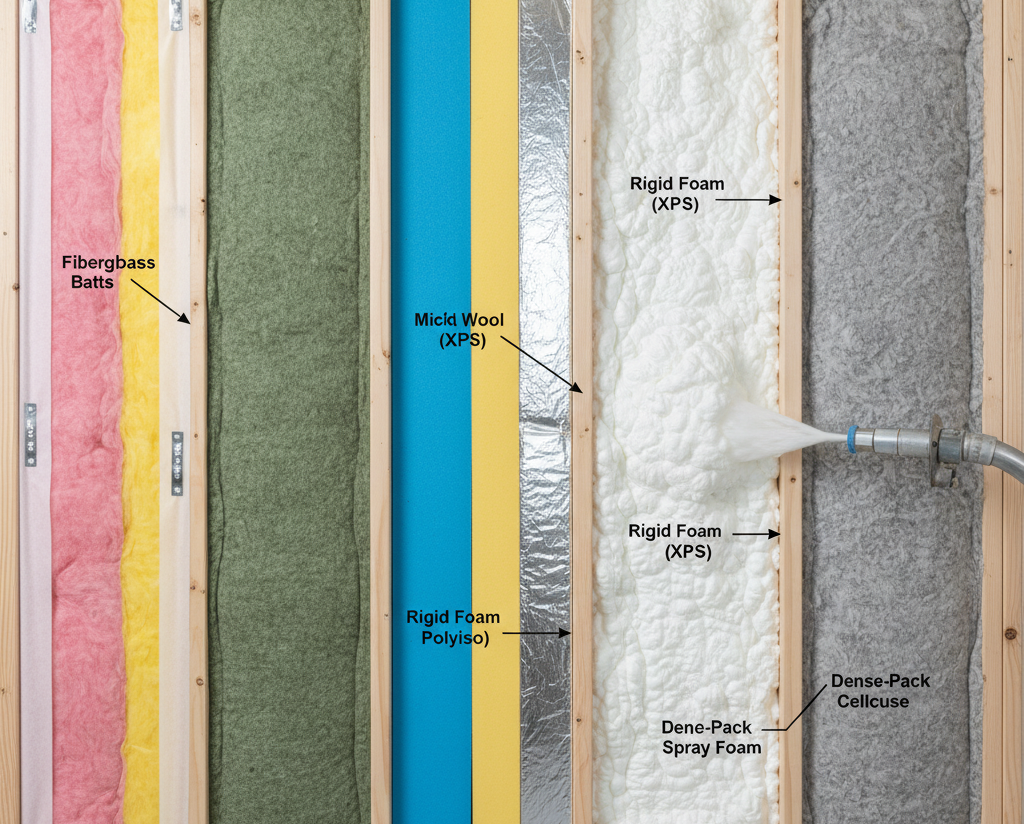
Understanding the best types of wall insulation helps homeowners make informed choices for their homes. Different insulation materials offer unique benefits for energy savings and comfort. A skilled remodeling contractor can help you determine which option best suits your specific needs. Each type has different costs, performance levels, and installation requirements. This guide breaks down five popular insulation options to help you pick the right one.
Fiberglass Insulation
Fiberglass insulation is well-suited for most homes because it is less expensive than other options and offers good thermal performance. This material uses glass fibers woven together to create a fluffy texture that traps air inside wall spaces. You can buy it in rolls or batts that cut easily to fit different wall sizes. Always wear protective gear when installing fiberglass, as small glass particles can irritate the skin and cause respiratory issues. Proper installation ensures that there are no gaps or compressed areas, which reduce its effectiveness.
Cellulose Insulation
Cellulose insulation stands out as one of the best wall insulation types because it’s made from recycled materials and works well for thermal control. This eco-friendly option uses recycled paper treated with fire-resistant chemicals. Here are the key benefits of cellulose insulation:
- Eco-Friendly: Made from recycled materials, reducing environmental impact
- High Thermal Performance: Provides excellent heat resistance for comfortable indoor temperatures
- Affordable: Costs less than many other insulation options
- Sound Control: Reduces noise between rooms for better acoustic comfort
Spray Foam Insulation
Spray foam insulation uses two liquid chemicals that mix and expand into foam when applied. This expanding action helps it fill gaps, cracks, and hard-to-reach spots for an airtight seal. Two main types exist: open-cell foam, which is softer and more flexible, and closed-cell foam, which is denser and has a higher insulating value per inch. This insulation type provides excellent thermal performance, resists moisture, and improves indoor air quality by stopping air leaks. Professional installation yields the best results for maximum effectiveness and long-lasting benefits.
Mineral Wool Insulation
Mineral wool insulation, also known as rock wool or slag wool, is well-suited for walls due to its fire resistance and sound absorption properties. When thinking about mineral wool for your walls, remember these four points:
- Fire Protection: This material won’t burn and handles high temperatures safely
- Sound Control: Dense fibers absorb sound effectively, reducing noise between rooms
- Moisture Protection: Repels water and prevents mold growth inside walls
- Long-Lasting: Maintains performance over many years without losing effectiveness
Polystyrene Insulation
Polystyrene insulation offers excellent thermal performance for walls, making it a popular choice for energy-efficient building projects. This insulation comes in two forms: expanded polystyrene (EPS) and extruded polystyrene (XPS). EPS costs less and weighs less, making it suitable for most wall applications. XPS offers stronger compression resistance and better moisture protection, making it good for basement walls or damp areas. Polystyrene boards cut easily and install, fitting tightly into wall spaces to reduce heat transfer. This insulation type has a high insulating value per inch, providing excellent thermal efficiency for wall systems.
Related Topics:
